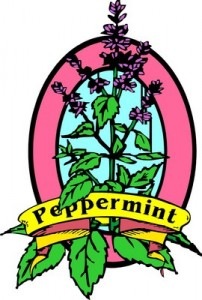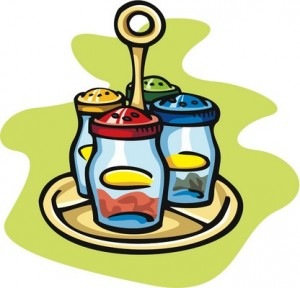 Mint, or mentha, that wonderful aromatic herb that’s refreshing, cooling, and so much more than a garnish or flavor.
Mint, or mentha, that wonderful aromatic herb that’s refreshing, cooling, and so much more than a garnish or flavor.
I did a lot of planting this past weekend – and have a couple of large pots brimming with different types of mint (there are many varieties) – a sure sign that summer days are somewhere in the near future.
Mint Has A Wonderful History
In Greek mythology, Pluto fell in love with a river nymph named Minthe (also known as Menthe). When his wife, Persephone, got wind of this she was so angry she turned Minthe into a plant so that people could trod all over her. Pluto couldn’t undo the spell but gave Minthe a wonderful aroma that he could smell when people walked on her and crushed her leaves and stems.
Known as the herb of hospitality, the ancient Greeks rubbed mint on their tables to clean them and mint tea is served throughout the Middle East to welcome visitors. Early Europeans threw it on their hard packed soil floors for a nice scent as people stepped on it. Biblical references suggest it was so highly valued that it was used as tithes by the Pharisees (Matthew xxiii, 23). Medieval monks appreciated its culinary and medicinal properties.
A Prolific Grower
Mint grows like crazy, extending its reach through a network of runners. It is so invasive that it is often grown in pots. That’s what I do – and it comes back year after year even after being left out on the deck and behind a shed in the snow, blazing sun, and whatever weather arrives in Connecticut.
Mint Is So Much More Than A Garnish
- has vitamins A and C and trace minerals
- soothes the stomach – spearmint and peppermint aid digestion — and eases breathing
- is used in tea, beverages (alcoholic and nonalcoholic), jelly, syrups, and ice cream
- menthol from mint essential oil (40 -90%) is used to flavor breath fresheners, drinks, mouthwash, toothpaste, gum, candy, and cigarettes (it masks the taste and soothes the throat); in cosmetics and perfume; and in some drugs
- has antiseptic qualities and is used as a mouth freshener, gargle, mouth wash
- is an antipruritic (anti-itch) especially for insect bites – often in combination with camphor
- repels mosquitos; mint oil is a “green” insecticide for cockroaches, ants, wasps, and hornets; rats and mice don’t like it and neither do deer.
Cooking And Storing Mint
The culinary source of mint is its fresh or dried leaf. Fresh is preferred over dried if storage or availability isn’t a problem. The leaves have a warm, fresh, pleasant, aromatic, and sweet flavor with a cool aftertaste.
When you buy mint look for leaves that aren’t bruised. The leaves can be harvested at any time. Fresh mint leaves should preferably be used right away but you can wrap them in a lightly damp paper towel and put them in a plastic bag in the refrigerator for a few days. It can also be frozen in ice cube trays. Dried mint leaves should be stored in an airtight container in a cool, dark, dry place.
Mint is full of cooling menthol and is a wonderful and refreshing herb to go along with simply grilled meat, vegetables, and fruit and is awesome to flavor beverages of all varieties.
Try some. One of my favorite things to do is to grab a few sprigs and leave them in a pitcher of water in the fridge. Really refreshing and usually prompts the response – “gee, this is really good.”
